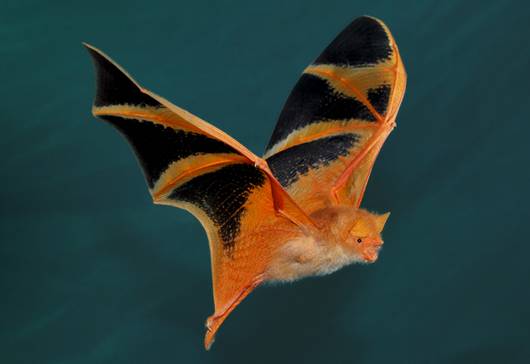Stamp: Brown Long-eared Bat (Plecotus auritus) (Germany, Democratic Republic 1962)
Brown Long-eared Bat (Plecotus auritus) (Germany, Democratic Republic 1962)
26 February (Germany, Democratic Republic ) within release Animals goes into circulation Stamp Brown Long-eared Bat (Plecotus auritus) face value 40 East German pfennig
| Stamp Brown Long-eared Bat (Plecotus auritus) in catalogues | |
|---|---|
| Michel: | Mi:DDR 872 |
| Yvert et Tellier: | Yt:DDR 585 |
Stamp is horizontal format.
Also in the issue Animals:
- Stamp - Red Wood Ant (Formica rufa) face value 5;
- Stamp - Least weasel (Mustela nivalis) face value 10;
- Stamp - Common Shrew (Sorex araneus) face value 20;
- Stamp - Brown Long-eared Bat (Plecotus auritus) face value 40;
Stamp Brown Long-eared Bat (Plecotus auritus) it reflects the thematic directions:
Bats are flying mammals of the order Chiroptera (/kaɪˈrɒptərə/). With their forelimbs adapted as wings, they are the only mammals capable of true and sustained flight. Bats are more agile in flight than most birds, flying with their very long spread-out digits covered with a thin membrane or patagium. The smallest bat, and arguably the smallest extant mammal, is Kitti's hog-nosed bat, which is 29–34 millimetres (1+1⁄8–1+3⁄8 inches) in length, 150 mm (6 in) across the wings and 2–2.6 g (1⁄16–3⁄32 oz) in mass. The largest bats are the flying foxes, with the giant golden-crowned flying fox (Acerodon jubatus) reaching a weight of 1.6 kg (3+1⁄2 lb) and having a wingspan of 1.7 m (5 ft 7 in).
Animals are multicellular, eukaryotic organisms of the kingdom Animalia (also called Metazoa). All animals are motile, meaning they can move spontaneously and independently, at some point in their lives. Their body plan eventually becomes fixed as they develop, although some undergo a process of metamorphosis later on in their lives. All animals are heterotrophs: they must ingest other organisms or their products for sustenance.


